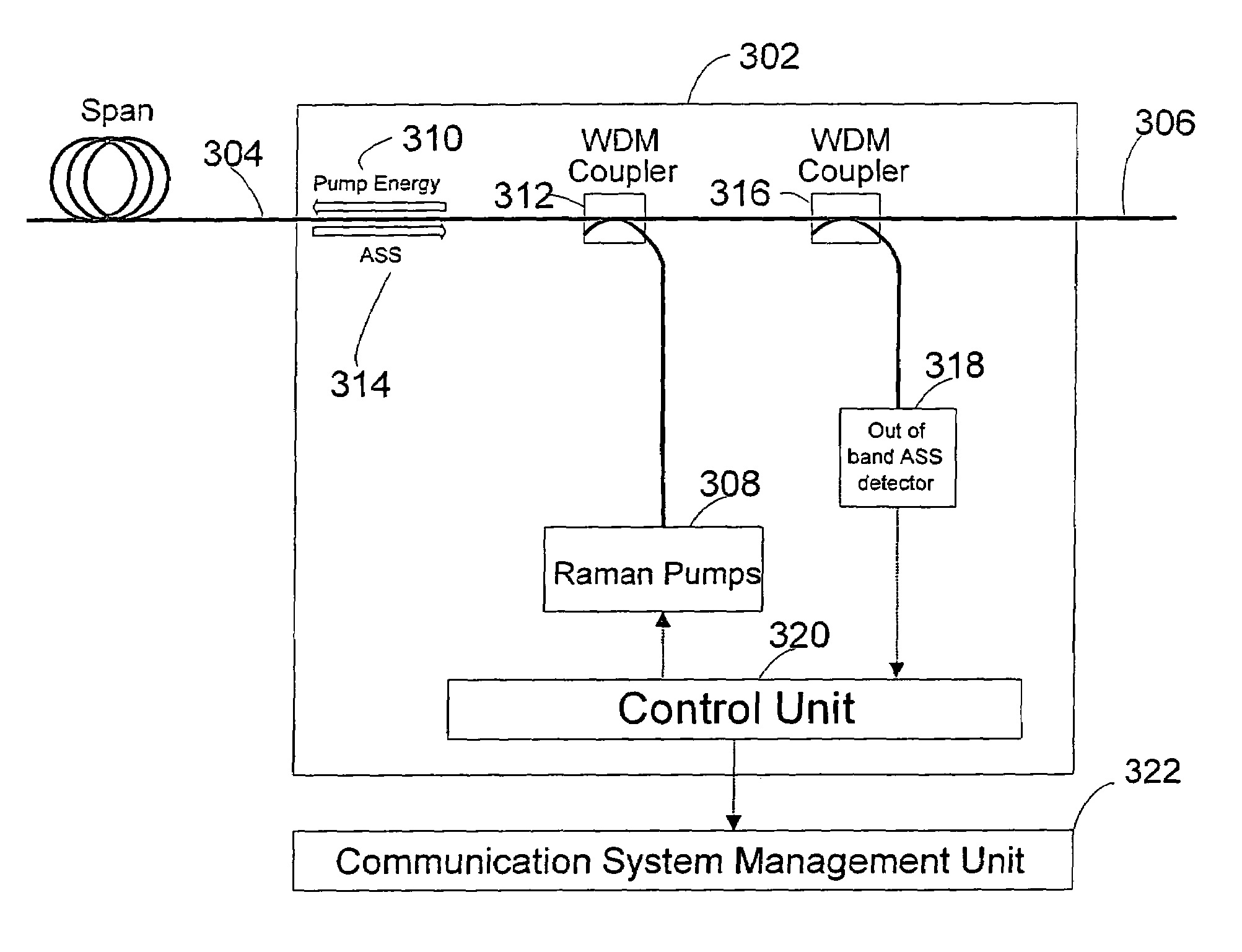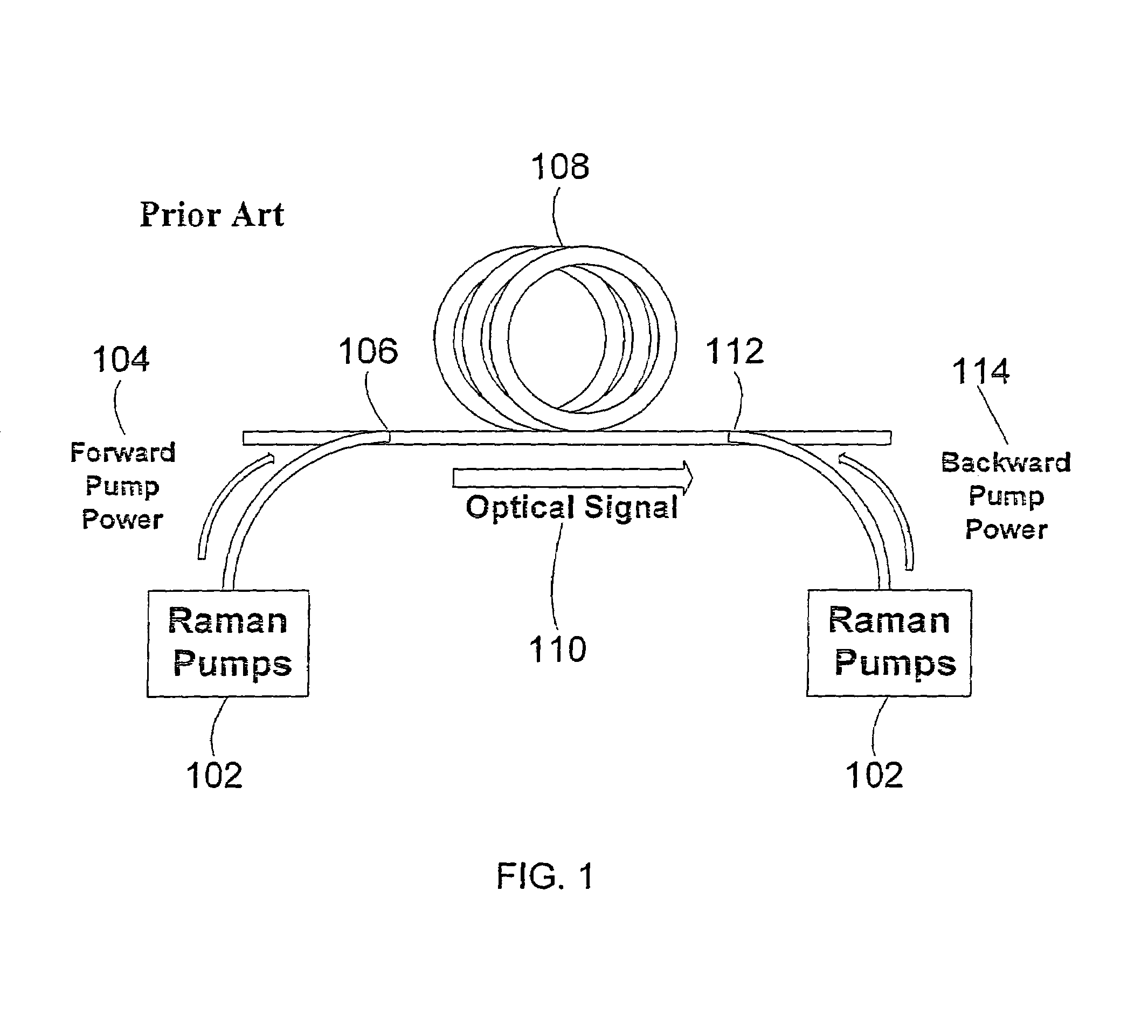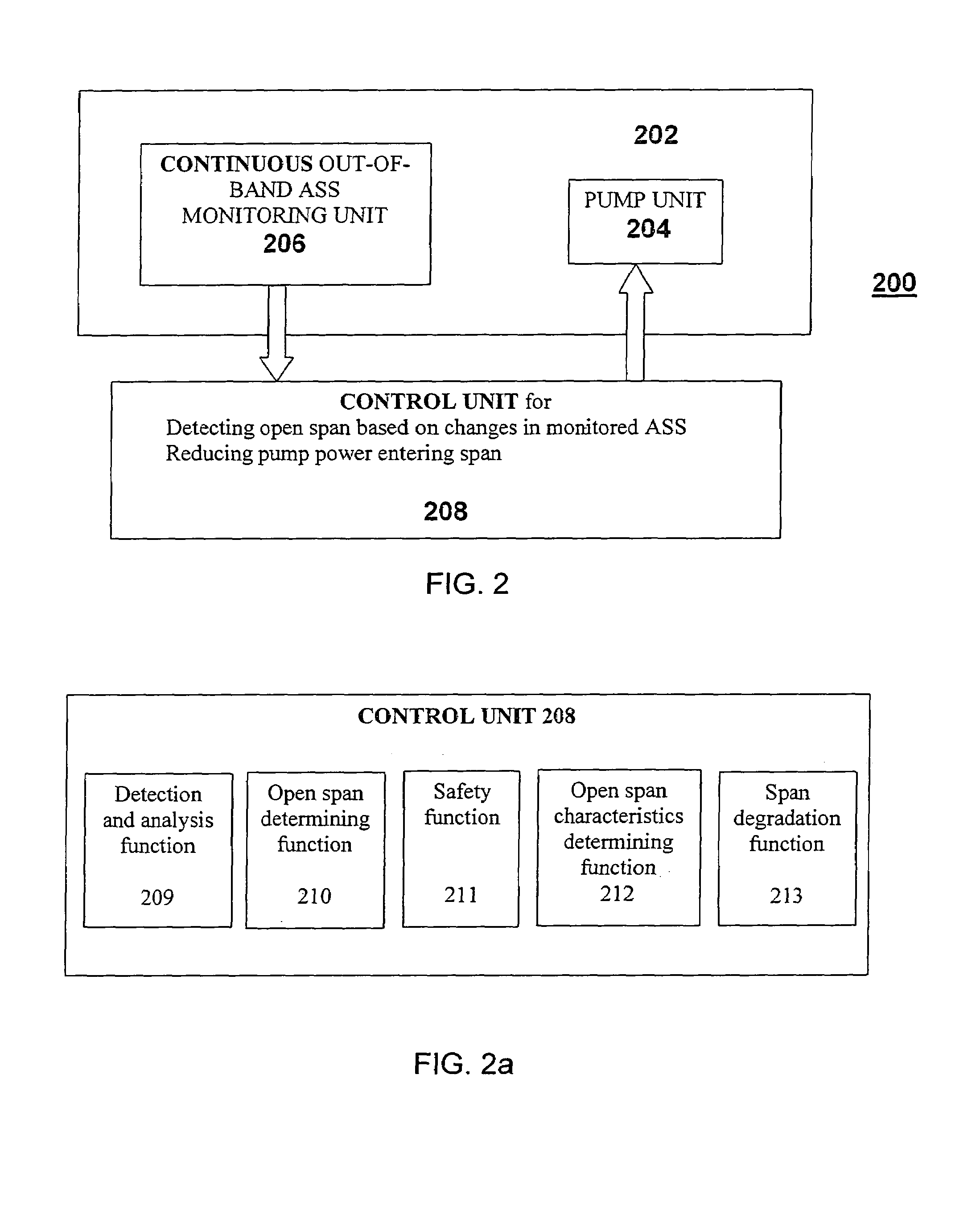Method and system for improved eye protection safety of distributed Raman amplifiers
a distributed raman and amplifier technology, applied in the field of optical fiber amplifiers, can solve problems such as human eye harm, pump energy escape, and potential safety hazards for persons coming into contact with the system
- Summary
- Abstract
- Description
- Claims
- Application Information
AI Technical Summary
Benefits of technology
Problems solved by technology
Method used
Image
Examples
Embodiment Construction
[0044]FIG. 2 shows schematically a preferred embodiment of a distributed Raman amplification system 200 of the present invention. System 200 comprises a Raman pump unit 204 operative to provide a Raman pump energy that comprises one or more Raman pump wavelengths to the span to be amplified (see below), and an apparatus for continuous out-of-band ASS monitoring 206, the monitoring providing an ASS power output. System 200 further comprises a control unit 208 operative to detect and analyze in real-time changes in the ASS power, and upon determination that such changes indicate an open span, reduce the level of the Raman pump energy entering the span to a safe level.
[0045]FIG. 2a shows the control unit 208 in more detail. The control unit includes a detection and analysis function 209 to detect and analyze in real-time changes in the out-of-band ASS power level, an open span determining function 210 to determine whether the change in out-of-band ASS power level indicates an open span...
PUM
 Login to View More
Login to View More Abstract
Description
Claims
Application Information
 Login to View More
Login to View More - R&D
- Intellectual Property
- Life Sciences
- Materials
- Tech Scout
- Unparalleled Data Quality
- Higher Quality Content
- 60% Fewer Hallucinations
Browse by: Latest US Patents, China's latest patents, Technical Efficacy Thesaurus, Application Domain, Technology Topic, Popular Technical Reports.
© 2025 PatSnap. All rights reserved.Legal|Privacy policy|Modern Slavery Act Transparency Statement|Sitemap|About US| Contact US: help@patsnap.com



